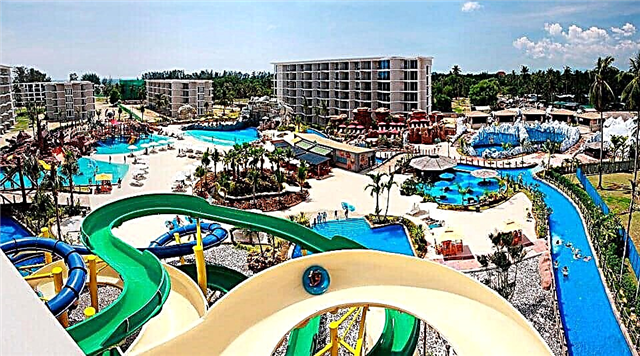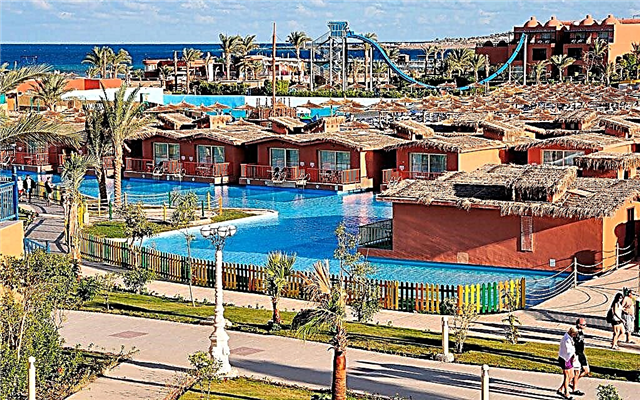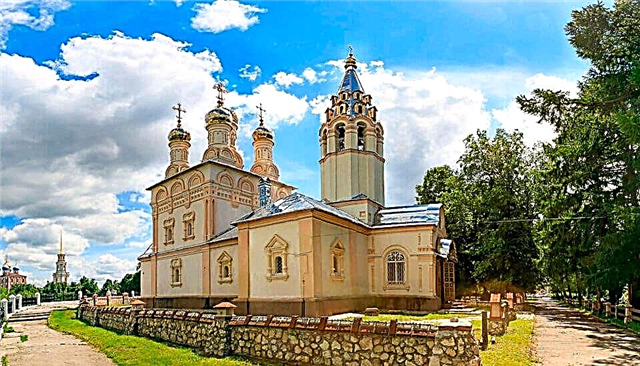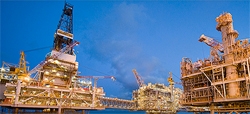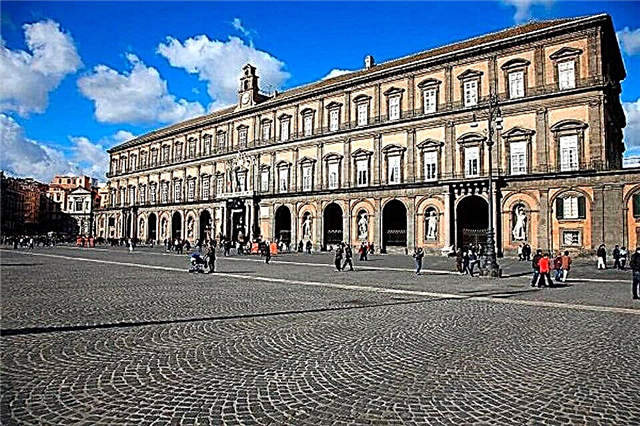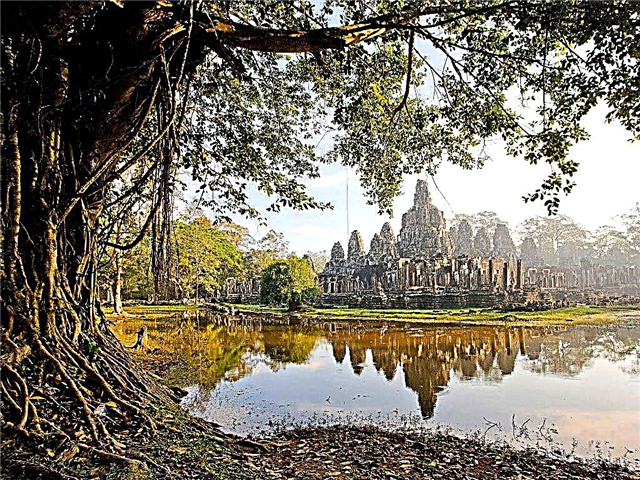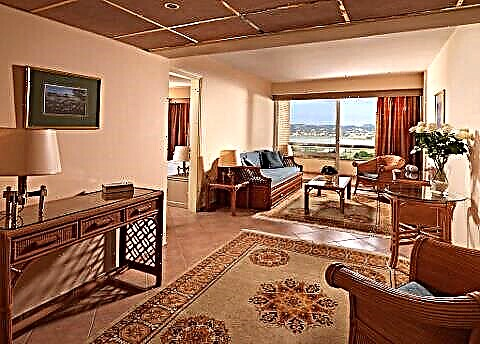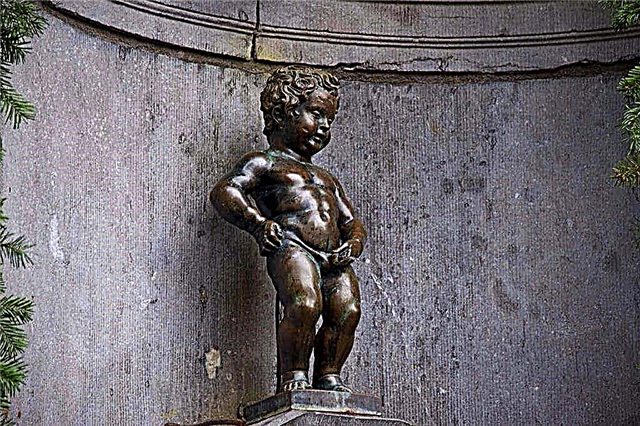Belgium is a country where history is intertwined with modernity. Architectural monuments, old buildings, castles and cathedrals - traveling through Belgium can give the impression of moving back in time several centuries ago. The cultural heritage of the country was also appreciated in the world organization of UNESCO. Many tourist sites are included in the World Heritage List and are under special protection.
Cities in Belgium are small, if you wish, you can get around them in a day. Of course, most travelers recommend starting from Brussels. Here is the famous Manneken Pis, the Royal Museum and the Royal Galleries are located here. Bruges and Antwerp are considered authentic and cozy cities. The small towns of Ghent and Leuven boast medieval sights and interesting architecture.

The best hotels and hotels at affordable prices.
from 500 rubles / day
What to see and where to go in Belgium?
The most interesting and beautiful places to visit, photos and a short description.
Grand Place (Brussels)
Historic square of Brussels. Its architectural ensemble is included in the UNESCO heritage. The main architectural objects are the Town Hall and the Bread House (King's House). The square itself was founded in the XII century. A century later, the Bread House was built. And in the 15th century, the town hall was built in the Gothic style. Thousands of tourists come here on August 15th. It is on this day that the square is covered with a carpet of millions of bright blooming begonias.

Manneken Pis (Brussels)
The famous fountain-statue depicting a naked boy pissing into the pool. Located near the Grand Place. Local historians disagree on when this monument was erected. According to various sources, this happened in the XIV or XV century. It was given its modern look by Jerome Dequenois in 1619. On holidays, the stream of water is replaced with beer or wine. The boy's wardrobe is changed by the honored guests of the city to the music of the orchestra.

Atomium (Brussels)
The structure is a symbol of Brussels and a symbol of scientific and technological progress, allowing for the peaceful use of nuclear energy. Made in the form of a crystal lattice of iron increased 165 billion times. Some of the 18-meter spheres are available for inspection by visitors. Between them, you can move along the connecting pipes in which the escalators are installed. A high-speed elevator takes you to the observation deck in the upper ball. Near the Atomium there is a mini-Europe park of miniatures.

Park of the Fiftieth Anniversary (Brussels)
A popular vacation spot for locals and visitors alike. Occupies an area of 37 hectares. There are many tall trees in the park, walking paths, and a small fountain. The main building is the Arc de Triomphe. It was built in 1905 and is 50 meters high. There are three museums in the exhibition pavilions next to it. An unusual architectural monument is the "Temple of Human Passions", an ancient pavilion in the form of a Greek temple.

Royal Galleries of Saint Hubert (Brussels)
The first covered shopping galleries in Europe. Discovered in 1847. The glazed passage of the galleries is 212 meters long. It houses shops, painting salons, restaurants. There is a cinema, a theater stage, a museum of manuscripts and letters. All three galleries of the complex are incredibly luxurious. Various categories of goods are presented - ethnic, antique, branded, as well as the famous Belgian sweets.

Canals of Bruges
A unique water network of canals that runs through the city center. Similar to the famous canals of Amsterdam. For an atmosphere of calmness and silence, tourists go on a boat trip. Excursions take place on open pleasure boats. This allows you to fully appreciate the beautiful ancient architecture of the city. Boats sail under stone bridges, past merchant mansions, unusual buildings and linden alleys.

Belfort and Market Square (Bruges)
One of the most popular places in Bruges is the Market Square. This is a historical place in the city, now completely pedestrianized. The center of the market square is the Belfort Tower, a UNESCO heritage site. The bell tower began to be built in 1240 and finished in the 15th century. The tower is 83 meters high and was built in the Gothic style. There are 47 bells on the upper tier. Previously, the building served as a sentinel function; the treasury was housed here and archives were kept. You can go upstairs along a narrow spiral staircase.

Burg Square (Bruges)
The square is surrounded by ancient architectural buildings. It attracts many tourists, it is the historical center of the city. The decoration of the Burg square is the town hall, erected in the XIV-XV centuries. Three tall towers and gilded sculptures on the façade make it incredibly beautiful. Other interesting buildings are the Governor's Residence, the Trial Chamber and the Old Civil Registry.

Basilica of the Holy Blood (Bruges)
Located on Burg Square. It was built in the XII century. For Christians, the basilica is important. Here is kept a valuable religious relic - a piece of cloth soaked in the blood of Christ. The church has two parts. The lower one is made in Romanesque style and consists of two chapels. The altar of one of them is made of black marble. The upper part of the basilica is made in the Gothic style.

Grass Street and Grain Street (Ghent)
Embankments of Ghent, located on the opposite banks of the Lis river. They make up a harmonious architectural complex; in the Middle Ages, these streets were the center of trade. Historical buildings of the 17th-19th centuries have been preserved here. - houses of trade guilds, built in the style of the Flemish Renaissance, Brabant Gothic, Baroque and Neoclassical. Grass Street and Grain Street are popular places for walking among tourists. Many houses have restaurants with summer terraces, and after a hearty dinner you can take a boat ride.

Grote Markt (Antwerp)
The main square of the city of Antwerp is often called the pearl of architecture. The square was founded in the 16th century and since then many buildings with interesting architecture have appeared on it. For example, the Cathedral of the Virgin Mary of seven naves in the Gothic style, which was built for almost 200 years. Gothic and Renaissance are combined in the building of the town hall. Guild houses are distinguished by their interesting décor. In the middle of the square there is a fountain with a statue of a warrior.

Antwerp-Central
The railway station, which is recognized as one of the most significant attractions in Antwerp. It has been ranked in the top ten of the most beautiful railway stations in the world more than once. The building was erected at the beginning of the XX century by the architect L. Delasenzeri. The appearance of the station resembles a palace and a cathedral at the same time thanks to the solemn architecture and richness of the facade decoration. More than 20 types of marble were used to decorate the interiors.

Royal Palace (Brussels)
The residence of the monarch of Belgium, it hosts official events. The palace was built at the end of the 18th century. In 1904, it received a new facade in the classicism style. Several rooms of the palace and the terrace are open to visitors from late July to late September. The Imperial Room contains fresh flowers from all provinces of Belgium. In the Hall of Mirrors, the ceiling is lined with millions of Thai scarab beetle wings.

Leuven Town Hall
Built at the end of the 15th century in the Gothic style. Located near the church of St. Peter. Has undergone several restorations after the World Wars. The facade of the town hall is decorated with 236 statues and scenes from the Bible, it has many turrets and small windows. Leuven Town Hall is considered one of the most luxurious medieval buildings in the world. The interior decoration is also great. The walls are decorated with paintings by famous artists.
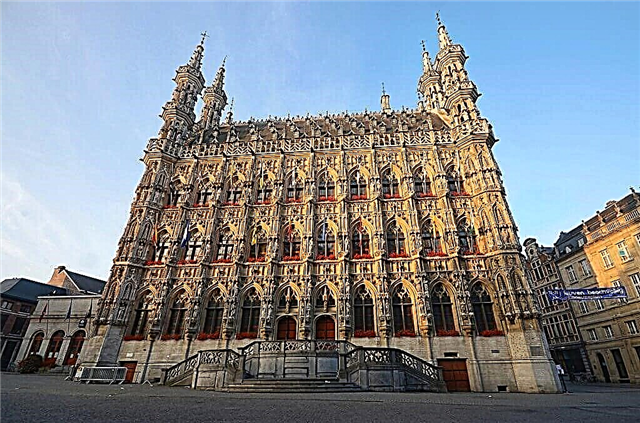
Parlamentarium (Brussels)
A visitor center for the history of the European Parliament.About what tasks and goals it faces, how its members are going to solve them. In the halls of the center there are many interactive schemes, installations and stands detailing the work of the European Parliament. The exhibition is open every day, admission is free, there are audio guides in the 24 official languages of the European Union.

Menen Gate (Ypres)
Monument, a tribute to the soldiers who died in the First World War. Visually resemble an arch. At the top of the composition, you will see a plan of the disposition of the troops of that time in the battle for the city of Ypres. This architectural monument is crowned with the figure of a lion. The names of the dead and missing soldiers and officers are carved on the inner slabs of the arch. Every day, since the opening of the monument, at 20.00 a trumpet player at the gate plays the end signal. The tradition was interrupted only during the occupation of the city during the Second World War.

Staircase "Mount de Buren" (Liege)
Built in 1881, the main task is to provide quick access for soldiers from the garrison located at the top to the city center in the event of an enemy invasion or popular uprising. The staircase consists of 374 steps. When climbing, you can relax on platforms with benches set at different heights. From above there is a beautiful view of the city of Liege. In October, the Night Hills Festival takes place here. During it, thousands of candles are placed on the steps of the staircase.

Flemish Beguinages
Settlements of single women - unmarried or widows, united in communes. In Belgium, beguinages are architectural ensembles that include residential buildings, cells and chapels. The courtyard was planted with flowers or used as a vegetable garden. Beguinages were especially widespread in the 13th century. In total, about 80 such complexes have survived in the world, of which 30 are located in Belgium and are included in the UNESCO heritage list.

Cathedral Saint-Michel-et-Gudul (Brussels)
An excellent example of Gothic art. The cathedral is a composition with two symmetrical towers 64 meters high. There is a bell in the north tower. Each tower's staircase leads to a picturesque terrace. The interior is dominated by a combination of asceticism and pomp. Magnificent statues of the apostles adorn the snow-white columns. Organ concerts are often held in the cathedral for everyone.

Notre Dame (Tournai)
The cathedral is included in the list of objects protected by UNESCO, to date it has been preserved in good condition. The construction of the cathedral began in 1100, and was completed only in the XIV century. Over the years, the building style has changed from Romanesque to Gothic. The cathedral stands out for its towers - the central tower with a pyramidal roof and 4 corner ones, in which the bell towers are located. All towers are approximately 83 meters high.

Cathedral of Saint Bavo (Ghent)
In 942 a wooden church was founded, which was later enlarged and rebuilt in the Gothic style. The construction of the cathedral is famous for its Ghent altar. Its height is 3.5 meters and its width is 5 meters. It is considered one of the most important works of art in the world. The images of the altar show scenes from the revelation of John the Theologian. A total of 258 human silhouettes are depicted on the panels of the altar.

Cathedral of Our Lady of Antwerp
This cathedral is one of the largest in the Roman Catholic Church, moreover, it bears great architectural value. The highest tower of the cathedral is 123 meters high. Construction began in 1352 and has not been completed to this day. The building style is Gothic. The works of art kept in the cathedral are also of great value. These are the works of artists Matrine de Vos, Jacob de Baker and Otto van Veen.

Plantin-Moretus Museum (Antwerp)
The history of this museum is closely related to the history of printing in Europe. One of the first printing houses in Europe was opened in Antwerp in 1555. In 1877, in the building of the printing house, the city authorities opened a museum with exhibits of printing from the 16th century and a library. It is included in the UNESCO heritage list. The library's funds include 30,000 copies of historical and valuable books. Among the exhibits of the museum are printing presses dating back to 1600.

Royal Museums of Fine Arts (Brussels)
A museum complex that includes most of the artworks in Belgium. It was founded in 1801. 1200 items of European painting of the XIV-XVIII centuries. housed in the Museum of Ancient Art. They are divided into collections - French and Italian, Dutch, Flemish. The Magritte Museum contains about 150 of his works from different periods of creativity. The Museum of Modern Art presents works by Belgian masters - surrealist painters, impressionists, sculptors. The above museums are located in Brussels. In its suburb, the city of Ixelles, there are two more art museums - the Virz Museum and the Meunier Museum.

Musical Instrument Museum (Brussels)
One of the largest museums of this kind in the world. Contains over 8000 instruments of various types - folk, academic and traditional. The museum was founded in 1877 on the basis of the collections of the musicologist Fetis and King Leopold II. Since 2000, it has been housed within the walls of a historic Art Nouveau building. More than 100,000 people visit the museum annually. From time to time the museum organizes concerts of performers on modern instruments.

Museum "In the Fields of Flanders" (Ypres)
The atmosphere of the front-line Ypres is unique. The expositions of the museum display wartime items - weapons, soldiers' uniforms, original documents. Modern technologies allow the museum to show the bloody battles of the First World War on a special interactive map. Personal stories, as well as stories of nurses, priests and soldiers, are shown in video kiosks. The name of the museum is taken from a poem by McCrae.

MAS Museum (Antwerp)
The name of the museum stands for “Museum on the River”. It is housed by the river Scheldt in a modern building made of red sandstone and glass. A large spiral staircase runs along its perimeter, leading to the observation deck on the top floor. The funds of the museum contain collections of various subjects - archeology, shipping, the history of the region, ethnography and a collection of works of art. Museum exhibitions attract a large number of visitors.

Castle of the Counts of Flanders (Ghent)
The castle was built in 1180. Its defensive system has reached the present day almost in its original form. Over the years, the castle has been used as a textile factory, a mint, a courtroom and a prison. Now the city authorities have located a museum of justice and weapons in the castle. Most of the exhibits are instruments of torture and a collection of ancient weapons.

Sten Castle (Antwerp)
The fortress was founded in the XIII century, during the reign of Charles V it was significantly rebuilt. For five centuries, the castle was used as a prison. Part of the fortress was demolished in the 19th century to combat the shallowing of the Scheldt River. Almost one facade remained from the castle. In 1890, the Museum of Archeology was opened in the castle of Sten, and later - the Museum of Navigation. Near the castle there is a monument to the folklore character Long Wapper.

An-sur-Les cave
You can get to the cave by sightseeing tram that runs from the nearby village directly to the grottoes of the cave. There is high humidity inside, and the temperature is kept at 13 ° C. The main objects of observation in the cave are stalagmites. One of them is 5 meters high and is called the Minaret. Its age is estimated at 12,000 years. A light show is held for sightseers, and a cannon volley will help assess the acoustics of the cave.

Waterloo
A museum complex near the city of Waterloo. Dedicated to the great battle in which Napoleon Bonaparte suffered his last defeat. Consists of a museum, a circular panorama of the battle and an artificial 40-meter hill with a statue of a lion on top. Waterloo is a must-see for any tourist with a little interest in history. Its creators were able to perfectly convey the spirit of the Napoleonic era.

Lake of Love (Bruges)
Located in Minnewater Park. Snow-white swans swim in the waters of the beautiful lake.All of them belong to the city of Bruges, so they have a mark on their beaks with the letter "B" and the date of birth. You can take a boat trip on the lake. This will give an opportunity to see an old bridge and a gingerbread house on its picturesque banks. On the shores of the fabulous lake, there are always many artists with easels and couples in love.

Pyrie Dyza
The park is located 60 km. from Brussels. Combines a zoo and a botanical garden. An old abbey and the ruins of ancient buildings have been preserved on the territory of the park. The botanical garden, zoo aviaries, terrarium and oceanarium are located among the architectural monuments. There are several themed zones in the park. While walking along it, you can visit the African savannah, rainforests, a lagoon with a ship and a submarine.

De Panne beach
The resort on the shores of the North Sea was founded in 1831. Nowadays, the beach with white sand is always crowded. The water in the sea warms up no higher than 20 ° C, but there are no rays of the scorching sun and sweltering heat. Due to the strong winds, De Panne Beach is prized by yachting and surfing enthusiasts. On the shore there are sports fields, a golf course, attractions and a go-kart center. Sports festivals and concerts are often held.

Tomorrowland
Festival of electronic and dance music. It began to be held in 2005 and now it is one of the most famous festivals in the world. In 2017, it was visited by 400,000 people from 75 countries, including King Philippe of Belgium and his wife. The festival takes place in the De Shchor park. A huge camp with the name "City of Dreams" is being built here. The enchanting concert show is complemented by laser light, pyrotechnics and incredible decorations.


